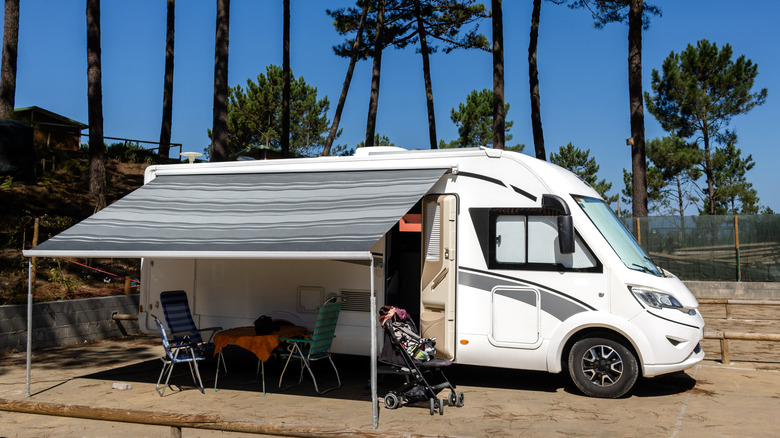More Americans Are Living In RVs Than Ever Before - Here's Why
Since recreational vehicles (RVs) first gained prominence in the 20th century, Americans have associated these vehicles with both freedom and the joy of travel. Unlike campers, many RVs are drivable motorhomes that don't require another vehicle to transport them. Also, while RVs can range in size, most are equipped with some form of living quarters, so you can drive them and camp out in an RV park without needing to stay at a hotel. These features continue to remain popular, but the demand for RVs is increasingly being driven by families who are looking for more affordable housing rather than using it as a vehicle to leave their homes for vacation. Despite some of the perks of living in an RV, there are also many drawbacks to consider. This can include unanticipated costs, limits on lengths of stay at public RV parks, limited amenities, an increased risk of dealing with natural disasters, and more.
The concept of living in an RV full-time isn't new. While this lifestyle was once primarily associated with retirees, younger, working adults (including those with children) are also increasingly living in RVs. Some choose to live in an RV due to more freedom and being able to explore, but for others, the choice is exclusively cost-motivated. There are also three things you should know before buying an RV to make the process smoother.
Are RVs as housing alternatives more affordable?
Given the increased cost of living, coupled with an ongoing housing shortage in the U.S., many Americans are looking for alternatives to traditional homes, as well as relocating to areas with more affordable housing overall. Some full-time RV residents have reported spending between $2,000 and $3,000 a month (per two adults) on their expenses, including food and clothing. Since the U.S. Census Bureau reported median mortgage payments were more than $2,000 and median gross rent was nearly $1,500 in 2024, it's easy to see how individuals could consider switching to an RV as a permanent home to be a more affordable option.
However, despite living in an RV as a mode of affordable housing, this option is not as budget-friendly as it might seem. First is the cost of the RV itself, which can range from $10,000 for a basic model to as much as $300,000 for luxury versions. Aside from insurance and maintenance, RV residents may also need to find a campground to park and stay. While the camps can offer utilities, laundry services, and internet, such amenities come with a cost of around $50 per night, depending on the site. You're also at the mercy of the oil market when it comes to trying to figure out average fuel costs for the RV. An RV can depreciate in value quickly, and unexpected repairs can also lead to more expenses. As Kat Tucker, a former RV resident, told NBC News, "It can be a great lifestyle, but it can also be yet another trap for poor people who just keep getting poorer."

